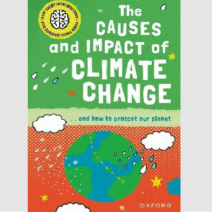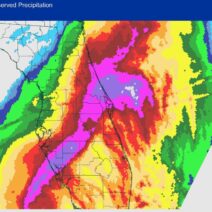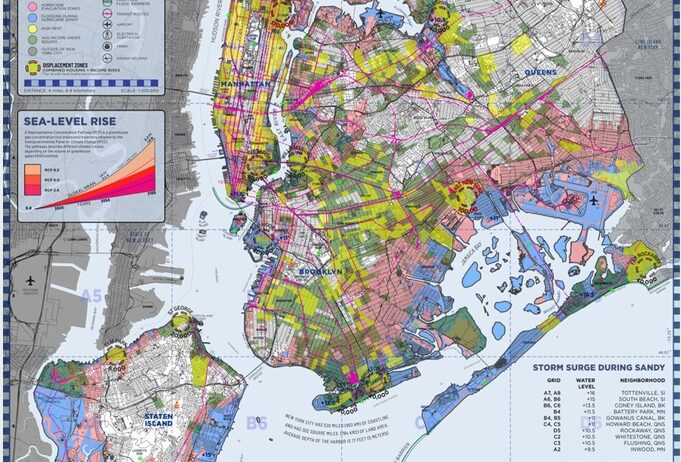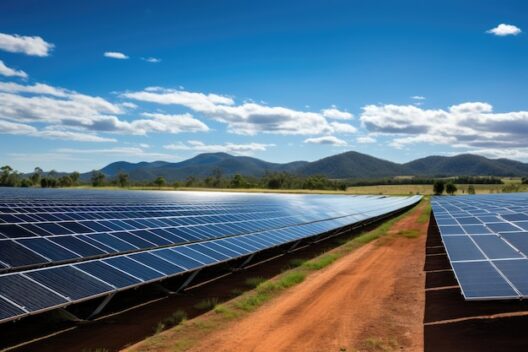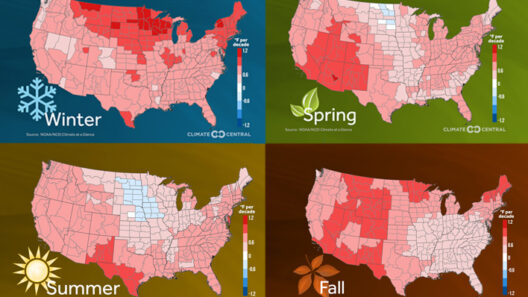New York City (NYC) possesses a humid subtropical climate, characterized by a distinct seasonal variation that deeply influences not only the environmental dynamics but also the socio-economic aspects of urban life. Its climate is shaped by various factors, including geographical location, topography, and the urban heat island effect, which significantly affect the weather patterns experienced throughout the year.
From the temperate spring days that invite the thrumming pulse of outdoor activities to the sweltering summer months, which often see heatwaves exacerbated by humidity, the climatic conditions in NYC provide a backdrop to the city’s extensive daily life. Autumn ushers in moderately cooler temperatures, cloaking Central Park in vivid hues, while winters summon a chill that can sometimes blanket the city in snow.
The subtropical classification of NYC indicates the influence of both maritime and continental air masses, leading to a climate where both cold and warm fronts interact. The city features four distinct seasons—spring, summer, autumn, and winter—with each season contributing uniquely to the city’s atmosphere. The shifting weather serves as a regular cadence, with temperature fluctuations from the frigid depths of winter to the sultry heights of summer affecting both inhabitants and infrastructure alike.
Spring in NYC serves as a transition period where the harshness of winter gradually recedes. Typically spanning from March to June, spring temperatures can range from the mid-40s to the low-70s Fahrenheit. This season not only encourages the blooming of diverse flora, adding vibrancy to the urban landscape, but also fosters increased social engagement as residents flock outdoors. Events such as the annual Cherry Blossom Festival in Brooklyn’s Botanical Garden illustrate how the embracing warmth can invigorate the community.
Summer, however, can present formidable challenges. The months of July and August often swelter with average high temperatures soaring into the 80s and even 90s Fahrenheit, accompanied by high humidity levels. Such conditions increase the discomfort levels for residents and can lead to heat-related illnesses, disproportionately affecting vulnerable populations. Additionally, the urban heat island effect exacerbates this phenomenon, as concrete and asphalt absorb and retain heat. Thankfully, NYC has invested in solutions such as increased greenery and the introduction of urban parks, which help mitigate these extreme temperatures.
As summer wanes, autumn graces the city with a temperate embrace. With average temperatures dropping into the 50s and 60s, this season often brings crystal clear skies and a celebratory atmosphere as the city prepares for festivities and harvests. The changing foliage not only provides aesthetic charm but also signals the onset of cultural events like Halloween parades and Thanksgiving celebrations in Times Square. It’s a season where people enjoy the comforts of pumpkin-flavored everything and gather in parks for seasonal picnics.
Then comes winter, a season that can be both enchanting and burdensome. Spanning from late December to early March, winter in NYC can see fluctuations with temperatures dipping into the 20s and 30s Fahrenheit. Snowfall can be both a nuisance and a delight, transforming the skyline into a winter wonderland. However, this season raises significant issues related to transportation, infrastructure strain, and homelessness. The stark contrast between the cold and the vibrancy of holiday decorations creates a unique ambiance, albeit one that brings equal measures of beauty and challenge.
Beyond the seasonal transitions, understanding the climate of NYC necessitates an exploration of extreme weather patterns increasingly prevalent in today’s world, likely fueled by climate change. With rising global temperatures, the city faces enhanced risks—more intense storms, flooding, and higher sea levels threaten Manhattan, Brooklyn, and other boroughs that hug the coast. The increased frequency of heavy rainfall can lead to flash floods, while superstorms like Hurricane Sandy in 2012 have resulted in devastating consequences, reshaping the city’s resilience strategy.
Moreover, the longitude and latitude of NYC predispose it to be a battleground against extreme weather phenomena. Climate projections indicate that by 2050, the city could experience increased heat days, grappling with the impacts on public health, urban infrastructure, and energy demand. Urban planners and policymakers are prompted to take significant strides, implementing initiatives such as green roofs and rain gardens designed to absorb excess rainfall, and creating sustainable transportation systems to reduce carbon emissions.
The fluctuation in climate and weather directly influences the daily lives of New Yorkers, from how they dress to the breadth of their outdoor activities. Public behavior shifts with each season; for instance, ice skating in Bryant Park during winter attracts throngs of people seeking joy despite the bitter cold. Conversely, summer’s sultry heat invites beach outings and rooftop gatherings, placing a premium on access to air conditioning and cooling stations for those unable to afford sufficient cooling solutions.
As climate change persists, the city’s climate will undoubtedly continue to evolve. It is imperative for residents, organizations, and governments to remain attuned to this dynamic and engage in sustainable practices that mitigate adverse effects while promoting environmental stewardship. From community gardens to advanced infrastructure projects designed to combat flooding, collective efforts are essential to ensure New York City adapts to its changing climate gracefully and sustainably.
In conclusion, the climate of NYC is not just a meteorological phenomenon; it is integral to the city’s identity and functioning. Understanding how varying climatic conditions shape life in the city enables its inhabitants to appreciate the beauty of each season while remaining vigilant against the challenges posed by an increasingly uncertain climate future. With the appropriate measures, NYC can foster resilience and continue to thrive amidst the shifting climate landscape.
